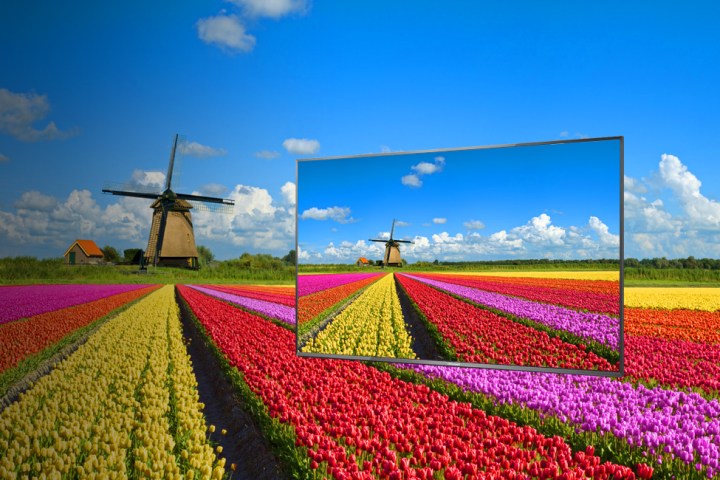
If the claims prove accurate, OLED displays may have some fierce new competition.
Read any OLED television review and you’re bound to see the same praise repeated over and over again: perfect black levels. Black levels are considered by video experts one of the most important elements of picture quality, because for truly impressive contrast, it’s best to start with a perfectly black canvas. Because OLED displays can shut each of their millions of pixels completely off, they achieve perfect black, allowing for high contrast ratios suitable for displaying HDR (high dynamic range) content, even though they can’t achieve the same intense brightness levels touted by LCD televisions.
Modern LCDs, on the other hand, rely on the extreme brightness afforded by LED backlights to achieve high contrast, because they are inherently ill-equipped to deliver perfect blacks. Since LCD cells can’t fully block out the intense bright light coming from behind them, light tends to bleed through, creating a sort of milky gray where there should be black. It’s common to see halos of light around bright objects on dark backgrounds, for instance.
Rather than rehab LCD, TV manufacturers have turned toward developing entirely new display technologies that match or surpass OLED. Samsung, for instance, is touting quantum dots as a solution in what could be called a QLED display.
But now Panasonic says it has developed a way to adapt the LCD displays we have today to provide perfect black levels while also reaching peak luminance levels of around 1,000 nits — the best of both worlds.
Panasonic claims its new IPS LCD panel is different than traditional LCDs because, in addition to the standard display cells used for each pixel, it adds another light-modulating cell behind the display cell. This can filter the illumination from the backlight, essentially acting as an additional shutter that allows pixels to be controlled individually.
Panasonic claims that this, when used in combination with a high-intensity backlight, leads to a contrast ratio 600 times that of conventional LCD panels. There would be no more light bleed, no more halos, no more milky-gray blacks. As an added bonus, IPS panels are known for providing better viewing angles than other types of LCD screens.

While current LCD TVs use local dimming to control individual zones on the display, the pixel-by-pixel approach Panasonic uses could prove to be much better. Presently, it appears Panasonic has commercial applications in mind for the technology — broadcasting, video production, medical displays, and automotive displays for example. But implementation in a television, be it from Panasonic or another TV brand, could be close behind.
If so, Panasonic’s new display could seriously shake up the TV landscape. Presently, OLED displays remain expensive to manufacture and are difficult to product in large quantities, and a QLED TV will require new manufacturing equipment and processes. But Panasonic says its new display can be made in the same factories currently making conventional LCDs, keeping costs down and requiring little time to implement. A revolutionary new TV could be right around the corner, in other words — and it might be affordable, to boot.
Panasonic says it will begin shipping samples in January 2017, so it’s a safe bet we’ll hear a lot more about this new display tech at the Consumer Electronics Show in Las Vegas this January.


